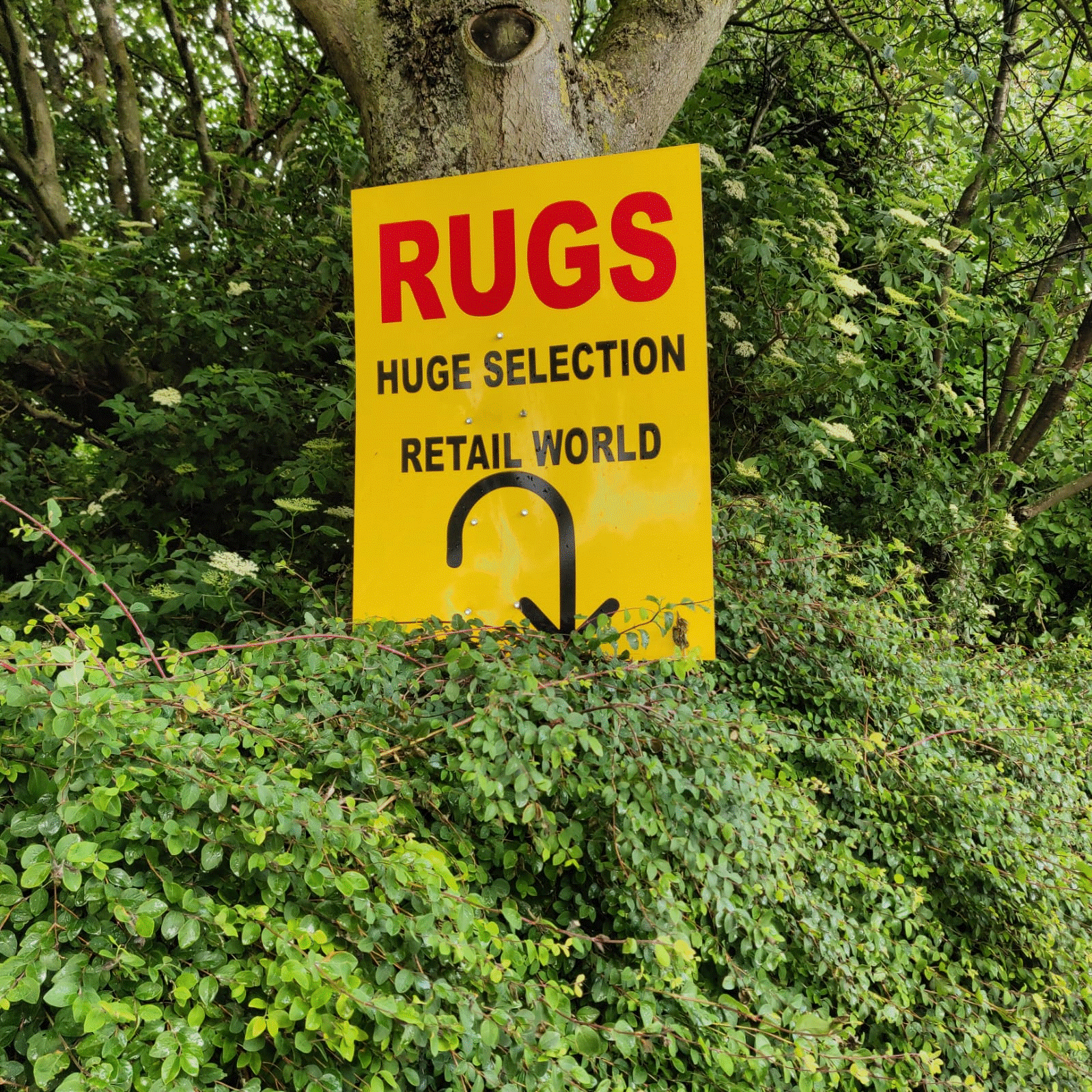Week 3 - Linguistic Landscapes
Linguistic landscapes – a theory and a method
This week we are looking at linguistic landscapes. We will examine a magazine piece from diggit, an online sociology magazine, about what linguistic landscapes are. We will do some questions then apply what we have learned to some pictures from the Wales/England border, before leaving you to do your own LL research and report on what you find.
The link to the reading is here
The editors, 26.2.19 ‘Linguistic landscapes: an introduction’ In: diggit available online at
https://www.diggitmagazine.com/articles/linguistic-landscapes-introduction
Read the article and think about what the authors and the people they quote, particularly Jan Blommaert, mean by linguistic landscapes – find a definition from the article.
What does the term semiotic mean? we can make meaning through language, through body language, through hand gestures, facial gestures, pictures, music and in other ways too.
Semiotics is the study of meaning.
Think of some ways that colour can link to meaning (traffic lights having red for stop and green for go is a good example)
Does the order in which languages are presented on a sign affect how you read that sign? (English is written left to right, but not all languages are; consider this advert for Coke which is written in Hebrew for example, a language of Israel:
Does the order from top to bottom affect which language you read first and which you might see as more important? Scholars have argued that in roadsigns the dominant language is placed on the top in the Roman alphabet - it is put first.
Here is a sign on the Welsh/English border going into Wales from England: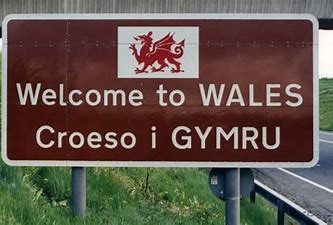
And here is one going from Wales into England in Herefordshire. There is no Welsh at all - Welsh stops being important at the English border in this sign.
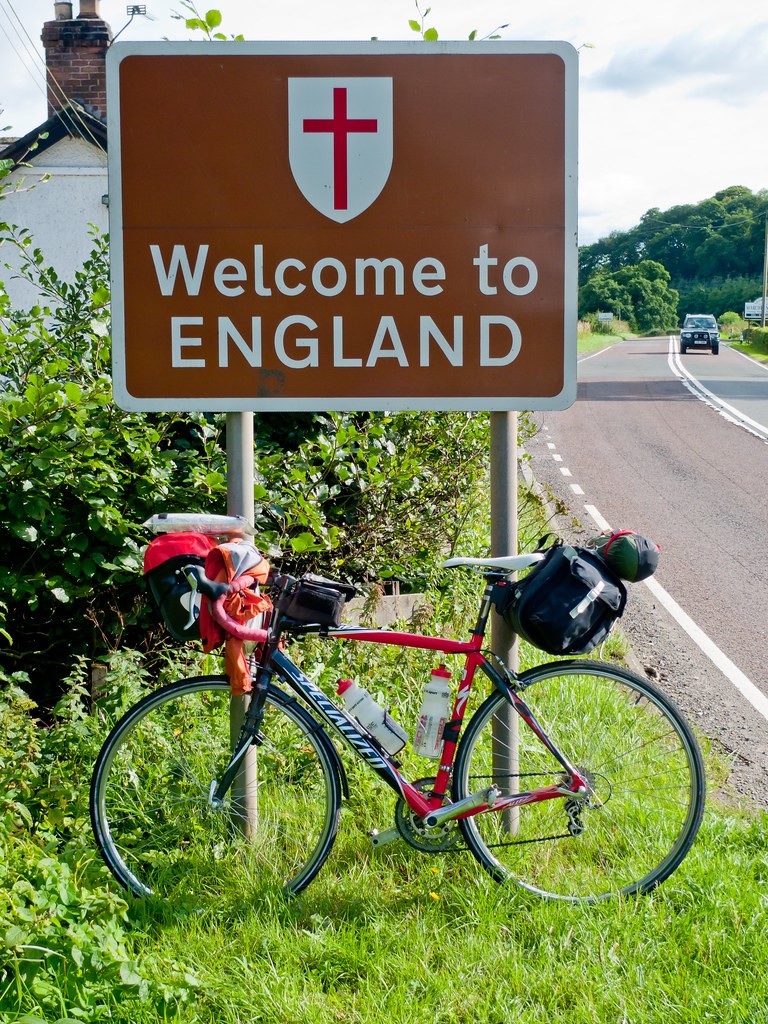
Here’s a newer one though, and there were none like this 30 years ago when I was young. Many English people have no idea that the Welsh for England is Lloegr, but most know that Wales is called Cymru in Welsh. Again there seems to be in imbalance of knowledge - Welsh people on the border know English language much more than English people on the border know Welsh?
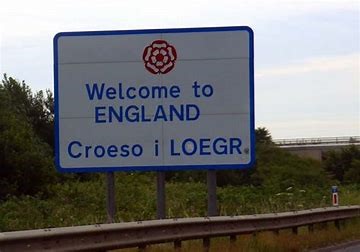
Let’s now do some of the work the writers of the blog piece suggested we can do on indexicality. The term indexicality comes from the notion of index as a pointer - signs can exist in the time they are in, they can point forward at audiences who have not seen them yet, or they may only make sense to people who are now not here anymore. For example this sign:

only makes sense to us now if it’s explained to us that in WW2 because bombs were falling, the UK needed lots of auxiliary (helper) fire service people, and this is an advert asking people to volunteer for that job. Indeed none of these posters are stuck up in the locations where they originally went (the middle of towns) so people could see them – instead they are collected by nostalgia collectors on eBay. What meaning does being a fire warden have now in the UK (a long time ago, brave, nostalgia?).
I want you now to collect some signs on your walks outside – you may take pictures with your phones, but do not take pictures with people in (they have not given permission) and only take pictures of shops and houses if no one is unhappy about it. You could photo graffiti, street signs, shop fronts, adverts.
Think about the audience your sign is meant for (the present day index) – is it new, old?
Who put it there (created it). Is it legal? (graffiti can be cleaned off, though many places have legal graffiti walls now).
Who is NOT meant to read it? Using abbreviations and other languages may mean some of us cannot read the sign -though we can use pictures for example – the meaning of the sign below is quite clear even if we can’t read:
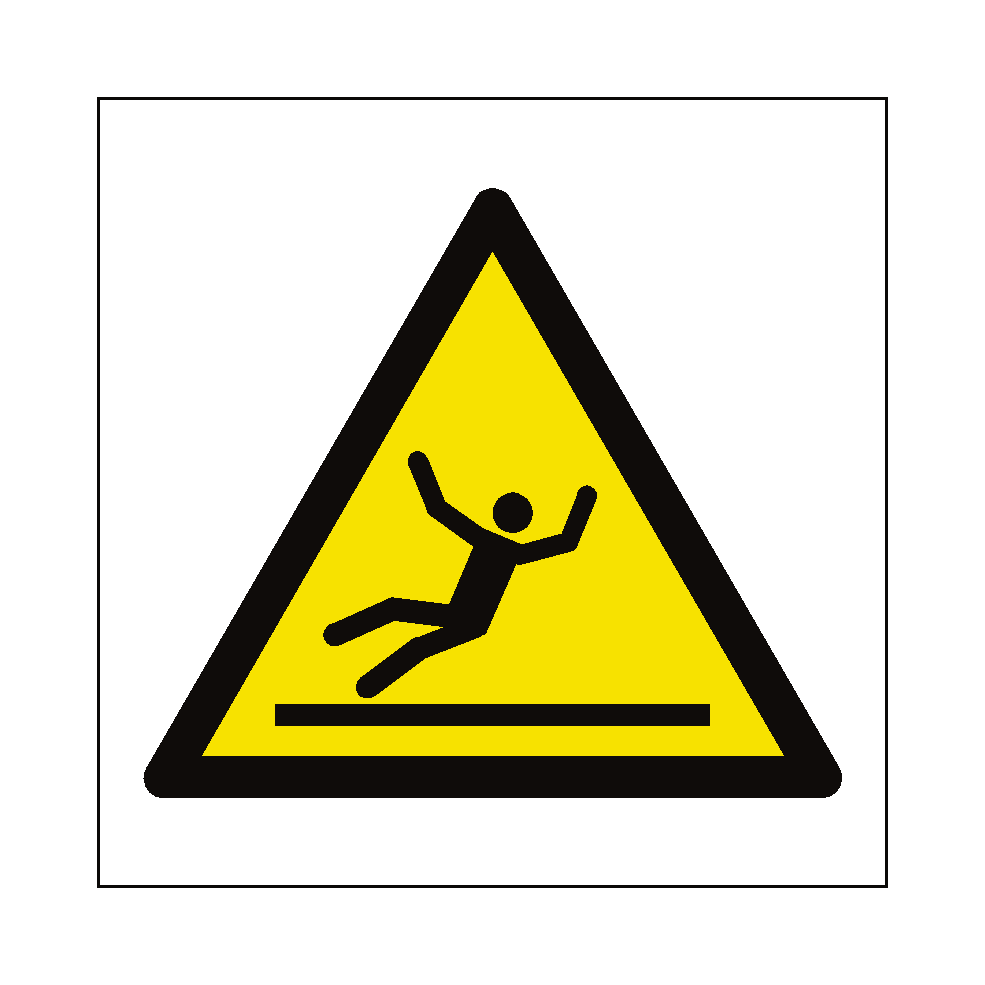
DISCUSSION OF LINGUISTIC LANDSCAPES
Many of you have responded to the theory and taken us round your local area while responsibly social distancing. Thanks to you all.
This image is from South Shields in South Tyneside in the North East of England. Our contributor found a plaque there which seems to be 'bottom up' - it was not placed there by the local council. It is part of a Bible verse from the book of Revalations. She remarks
"I am not entirely sure who is responsible for this sign or why exactly it is there. The target audience is probably walkers or people visiting the coast. There is a small possibility that it is there because Marsden Rock, the location of this sign, is quite well known for its high numbers of suspected suicides - although that seems unlikely, as the sign appears to predate any articles I’ve found online."
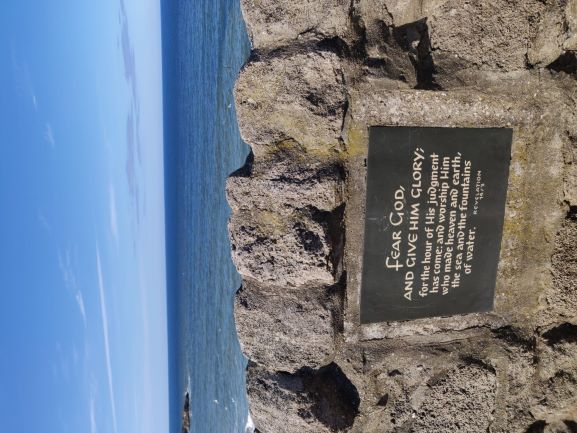
It is indeed likely that the Bible verse is intended to comfort anyone who is suicidal and at the point of breakdown, but clear to all of us that this might not be the effect if the person is not a Christian (or indeed if they are).
A sign slightly further along the coast is top down - it was placed there by the National Trust. It is only in English (to cater to the majority of visitors? Because it is cheaper? What other languages might be helpful?) Note that it is already overgrown, and will need maintaining if it is to keep people safe, but there is a clear metal barrier making walking on the other side of the cliff obviously something that is not recommended. It also has some authority, though it is not in a warning triangle like the slipping hazard sign was. 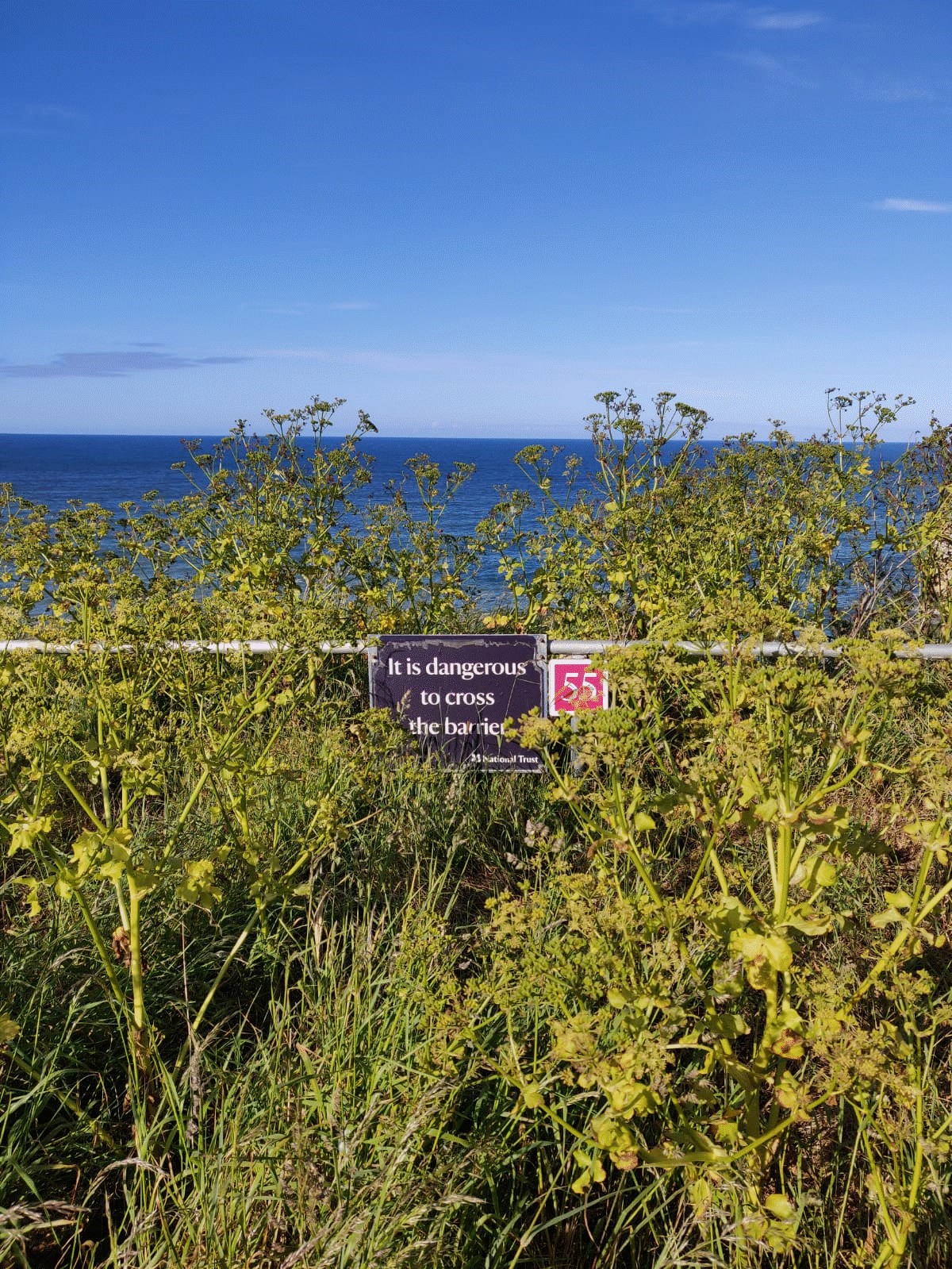
Finally we have an advertisement. We understand it as such because we know one buys rugs usually in England (most people have forgotten how to handmake rugs) and because it contains advertising hyperbole (exaggeration - 'huge selection'). The language is English to cater to most customers (though if anyone cannot speak English or cannot read they will be excluded). Census statistics would show us that English dominates in South Tyneside so this is not surprising. The rug showroom has added an arrow to tell drivers where to turn off but since the arrow points don it's hard for drivers to process what it means -it might mean make a U-turn, which could be illegal. This is a good example of a sign which tries to make life simpler for readers (drivers on that road) but does not quite succeed.
